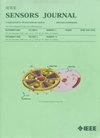Intelligent Energy-Efficient GNSS-Assisted and LoRa-Based Positioning for Wildlife Tracking
IF 4.3
2区 综合性期刊
Q1 ENGINEERING, ELECTRICAL & ELECTRONIC
引用次数: 0
Abstract
The Internet of Things (IoT), together with low power wide area network (LPWAN) technologies, have revolutionized wildlife monitoring and tracking systems. The research in this article has been motivated by the need of an adequate tracking solution based on LoRaWAN technology to study the population of the yellow-legged gull at Sálvora Island, Atlantic Islands of Galicia National Park. The main contribution is an intelligent approach that estimates the positions from LoRa signal features [received signal strength indicator (RSSI) and signal-to-noise ratio (SNR)] and trajectory information from previous positions, combined with as less frequent GNSS information as possible. By doing so, we achieve a good compromise between energy consumption, sampling rate, and application-level estimation accuracy. The results show that the approach achieves satisfactory performance for sampling frequencies according to the biological problems of interest, minimizing recharging cycles and, thus maximizing the duration of monitoring sessions. Specifically, the combination of previous GNSS positions and LoRa radio indicators within an intelligent framework can improve energy efficiency for extended periods with sporadic power-intensive GNSS position updates.求助全文
约1分钟内获得全文
求助全文
来源期刊

IEEE Sensors Journal
工程技术-工程:电子与电气
CiteScore
7.70
自引率
14.00%
发文量
2058
审稿时长
5.2 months
期刊介绍:
The fields of interest of the IEEE Sensors Journal are the theory, design , fabrication, manufacturing and applications of devices for sensing and transducing physical, chemical and biological phenomena, with emphasis on the electronics and physics aspect of sensors and integrated sensors-actuators. IEEE Sensors Journal deals with the following:
-Sensor Phenomenology, Modelling, and Evaluation
-Sensor Materials, Processing, and Fabrication
-Chemical and Gas Sensors
-Microfluidics and Biosensors
-Optical Sensors
-Physical Sensors: Temperature, Mechanical, Magnetic, and others
-Acoustic and Ultrasonic Sensors
-Sensor Packaging
-Sensor Networks
-Sensor Applications
-Sensor Systems: Signals, Processing, and Interfaces
-Actuators and Sensor Power Systems
-Sensor Signal Processing for high precision and stability (amplification, filtering, linearization, modulation/demodulation) and under harsh conditions (EMC, radiation, humidity, temperature); energy consumption/harvesting
-Sensor Data Processing (soft computing with sensor data, e.g., pattern recognition, machine learning, evolutionary computation; sensor data fusion, processing of wave e.g., electromagnetic and acoustic; and non-wave, e.g., chemical, gravity, particle, thermal, radiative and non-radiative sensor data, detection, estimation and classification based on sensor data)
-Sensors in Industrial Practice
 求助内容:
求助内容: 应助结果提醒方式:
应助结果提醒方式:


